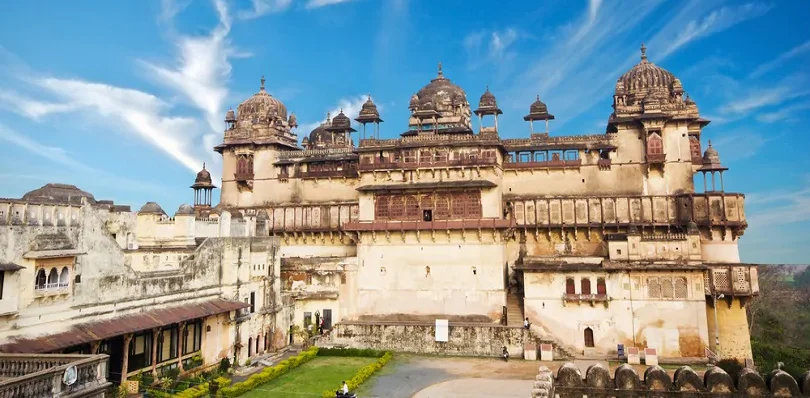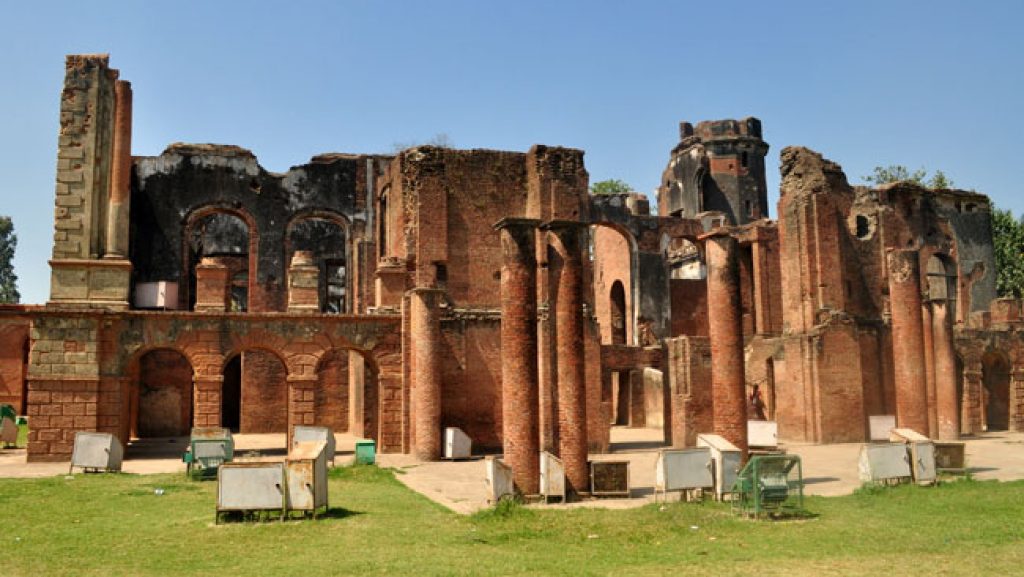Table of Contents
Introduction
The Indian Rebellion of 1857, also known as the Sepoy Mutiny or the First War of Independence, was a significant uprising against British colonial rule in India. It began as a revolt among Indian soldiers, known as sepoys, in the British East India Company’s army.
The immediate trigger for the rebellion was grievances among the sepoys over issues such as the use of rifle cartridges greased with animal fat.
The Indian Rebellion of 1857 remains a symbol of India’s quest for freedom and self-determination, and it continues to be remembered as a crucial chapter in the nation’s struggle against colonial oppression.
Army Rebellions Before Indian Rebellion
- Vellore Mutiny (1806):
- Cause: The introduction of new British military regulations that affected Indian soldiers’ traditional customs, including turban restrictions and shaving off facial hair.
- Details: Sepoys at Vellore Fort, under the command of the British East India Company, rebelled against these regulations and British officers. They killed many British officers and soldiers before the mutiny was suppressed. This incident led to the overhaul of British military regulations in India.
- Barrackpore Mutiny (1824):
- Cause: Grievances among the Bengal Native Infantry over pay, allowances, and racial discrimination.
- Details: Sepoys at Barrackpore mutinied against their British officers. However, the mutiny was quickly quelled, and the leaders were executed. This incident highlighted simmering discontent within the Bengal Army.
- Bengal Army Revolt (1824-1825):
- Cause: General discontent and grievances among the Bengal Native Infantry regarding pay, promotion policies, and harsh discipline.
- Details: The rebellion started with a small-scale mutiny in Barrackpore but quickly spread to other Bengal Army units. Despite sporadic outbreaks, the rebellion lacked central leadership and coordination, allowing British authorities to suppress it gradually.
- These early army rebellions, though smaller in scale compared to the rebellion of 1857.
Causes of the Indian Rebellion
Economic Cause
- Low Pay and Poor Conditions:
- Sepoys, despite their crucial role in maintaining British control in India, received low wages that were often inadequate to support themselves and their families.
- The economic hardships faced by sepoys were exacerbated by poor living conditions, lack of proper housing, and inadequate healthcare facilities.
- Discriminatory Policies:
- Indian soldiers were subjected to discriminatory treatment compared to their British counterparts in terms of pay, promotions, and access to certain privileges.
- British officers, who held higher positions and received better compensation, often displayed cultural arrogance and racial superiority towards Indian soldiers, leading to resentment and discontent.
- Land Revenue Policies:
- The British implemented exploitative land revenue policies that imposed heavy taxes on Indian farmers, leading to widespread poverty and indebtedness.
- Many sepoys came from agrarian backgrounds and were directly affected by these policies, as their families suffered from economic hardships and land confiscations.
- Disruption of Traditional Livelihoods:
- The British colonial policies disrupted traditional livelihoods and economic systems in India, leading to economic dislocation and social unrest.
- The introduction of British-made goods and industrial products undermined local industries and handicrafts, leading to unemployment and economic instability in certain regions.
- Economic Impact of Annexations:
- The British East India Company’s policy of annexing princely states through the Doctrine of Lapse and other means had significant economic repercussions.
- Annexations led to the loss of land, resources, and revenues for local rulers and their subjects, exacerbating economic inequalities and fueling resentment against British rule.
Political Cause
- Lord Dalhousie‘s policy of Doctrine of Lapse angered the ruling sections of the society.
- The annexation of Oudh on the pretext of misgovernance angered the people.
Religious and Social Causes
- The British introduced social reforms which were looked upon with suspicion and seen as steps towards conversion to Christianity.
- Abolition of Sati (1829), Hindu Widow Remarriage Act (1856), Caste Disabilities Act (1850)* were direct interference of British into Hindu religious faiths and social customs.
- Dalhousie also passed decrees allowing Hindus who had converted to Christianity to be able to inherit property, which had previously been denied by local practice.
- The British had an attitude of racial superiority and Indians had to face social discrimination which created resentment among people.
- Indians were excluded from well paid, higher administrative posts.
- The introduction of English education diminishes the social status of Mullahs and the Brahmins who were running indigenous schools and enjoyed respect among the common people.
- The Christian missionaries also indulged in attacking Hindu and Muslim religious beliefs.
*The objective of this act was to remove the Hindu right of inheritance and the law of property.
Immediate Cause
- Sepoys throughout India were issued a new rifle, the Pattern 1853 Enfield rifled musket.
- This rifle was issued to Indian troops in 1856.
- To load the new rifle, soldiers had to bite the cartridge to open and pour the gunpowder into the rifle’s muzzle.
- The news spread that the cartridges were greased with lard (pig fat) which was prohibited for Muslims and tallow (cow fat) which was prohibited for Hindus as cows were equal to a goddess to them.
- Both Hindus and Muslims were enraged and protested against introduction of this cartridges.
Course of the Indian Rebellion
- March 29, 1857: Mangal Pandey, a sepoy in the British East India Company’s army, rebels in Barrackpore after refusing to use the newly issued Enfield rifle cartridges rumored to be greased with animal fat.
- April 24, 1857: Sepoys of the 3rd Bengal Light Cavalry stationed at Meerut are punished for refusing to use the cartridges. This leads to widespread resentment among the sepoys.
- May 10, 1857: Sepoys in Meerut rebel against their British officers, freeing imprisoned comrades and killing British officers and their families.
- May 11, 1857: Meerut sepoys march to Delhi, where they are joined by Indian troops stationed there, and they proclaim Bahadur Shah II, the Mughal Emperor, as the leader of the rebellion.
- May 20, 1857: Delhi becomes the center of the rebellion, and the British are forced to evacuate the city’s civilian population.
- June 6, 1857: Siege of Delhi begins as British forces surround the city to retake it from the rebels.
- June 8, 1857: Indian troops rebel in Ambala, killing British officers and joining the rebellion.
- June 12, 1857: Rebels under Nana Sahib capture Cawnpore (Kanpur) after defeating British forces.
- June 27, 1857: Massacre at Cawnpore: British women and children, along with other civilians, are killed by rebels after they are promised safe passage.
- June 30, 1857: Siege of Lucknow begins as rebels surround the British residency, where British residents and soldiers are trapped.
- July 4, 1857: British forces defeat Indian rebels in the Battle of Kanpur, leading to the recapture of the city.
- July 17, 1857: British forces under Henry Havelock lift the Siege of Cawnpore and defeat Nana Sahib’s forces.
- September 21, 1857: Relief of Lucknow: British forces under Sir Colin Campbell break the siege and rescue the besieged British residents and soldiers.
- September 23, 1857: British forces recapture Delhi, marking the end of the rebellion in the city.
- November 1857 – March 1858: British forces systematically suppress remaining pockets of rebellion across India, using brutal tactics including mass executions and reprisals.
- June 20, 1858: Rani Lakshmibai of Jhansi dies in battle while fighting against British forces.
- June 1858: Tantia Tope, one of the rebellion’s leaders, is captured by British forces.
- July 8, 1858: Bahadur Shah II, the last Mughal Emperor, is captured by British forces and exiled to Rangoon (now Yangon, Myanmar).
- July 1859: The rebellion is officially declared over as the British regain full control of India.

Consequences of the Indian Rebellion
- End of the East India Company Rule:
- The rebellion exposed the vulnerabilities of the British East India Company’s administration and military control in India.
- After the rebellion, the British government dissolved the East India Company’s rule and transferred control of India directly to the British Crown.
- Reorganization of the Indian Army:
- The rebellion prompted significant reforms and reorganization of the Indian Army by the British.
- They introduced recruitment policies to prevent the concentration of soldiers from specific regions or castes, thereby minimizing the risk of large-scale mutinies.
- Changes in Administration:
- The British government abolished the Doctrine of Lapse, a controversial policy used to annex princely states, in response to the rebellion.
- New administrative policies were introduced to address grievances and concerns raised during the rebellion, including reforms in land revenue administration and governance.
- Impact on Indian Society:
- The rebellion had a lasting impact on Indian society, contributing to the rise of nationalist sentiments and movements against British colonial rule.
- It fostered a sense of unity and solidarity among various Indian communities, laying the groundwork for future independence movements.
- Religious and Cultural Ramifications:
- The rebellion heightened religious tensions and led to increased distrust between Indian communities and British authorities.
- It also influenced British policies regarding religious and cultural practices, leading to reforms aimed at respecting Indian customs and traditions to some extent.
- International Perception:
- The rebellion attracted international attention and led to debates about British colonial policies and practices.
- It prompted discussions about the ethics of colonialism and raised questions about British governance and treatment of colonial subjects.
- Legacy:
- The 1857 Rebellion remains a significant event in Indian history and is remembered as a symbol of resistance against colonial oppression.
- It inspired subsequent generations of Indian freedom fighters and nationalists in their struggle for independence from British rule.
Leaders Associated with the Indian Rebellion
- Bahadur Shah II (Delhi): Bahadur Shah II, the last Mughal Emperor, was proclaimed the leader of the rebellion in Delhi. He provided symbolic leadership to the uprising, with Delhi as the center of the rebellion.
- Nana Sahib (Kanpur): Nana Sahib, a prominent leader of the rebellion, led the revolt in Kanpur (then Cawnpore). He played a key role in capturing the city and was involved in the infamous massacre of British women and children during the Siege of Cawnpore.
- Rani Lakshmibai (Jhansi): Rani Lakshmibai, the Queen of Jhansi, led the rebellion in the region of Jhansi. She became a symbol of resistance against British rule and fought bravely in defense of her kingdom during the uprising.
- Tantia Tope (Central India): Tantia Tope was a prominent military leader who operated in Central India, coordinating rebel forces and conducting guerrilla warfare against British troops.
- Khan Bahadur Khan (Bareilly): Khan Bahadur Khan, a nobleman from Bareilly, led the rebellion in the region of Rohilkhand and Bareilly. He mobilized local troops and fought against British forces before eventually being captured and executed.
- Begum Hazrat Mahal (Lucknow): Begum Hazrat Mahal, the wife of Nawab Wajid Ali Shah of Oudh (Awadh), played a crucial role in the uprising in Lucknow.

